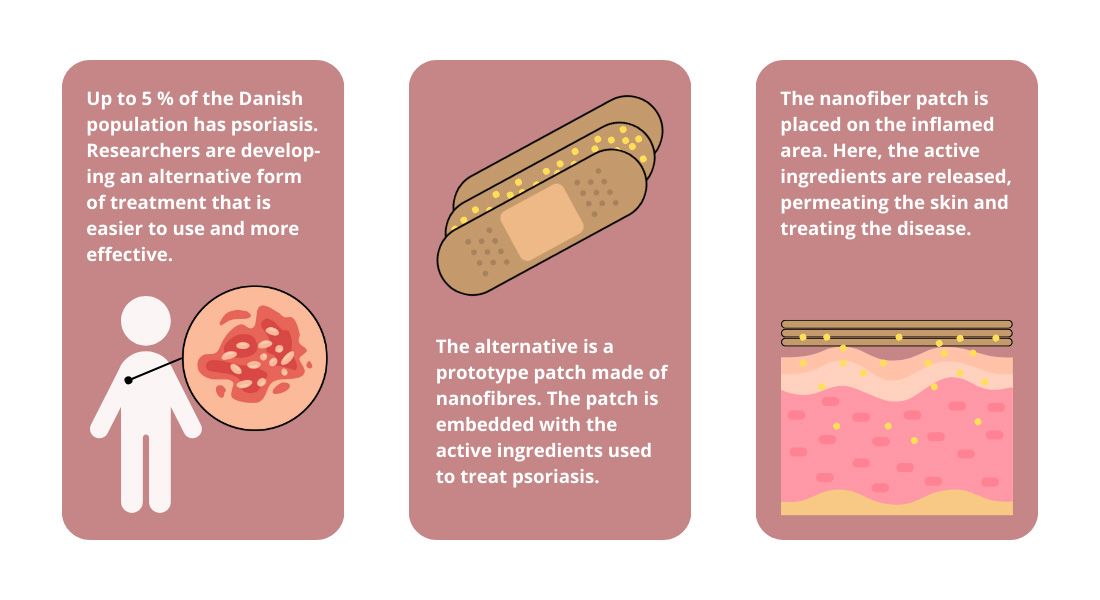
Benefits of chitosan in nanofibre nonwovens
Two active ingredients release onto the skin at different rates.

20th November 2024
Innovation in Textiles
|
Copenhagen, Denmark
Researchers at the University of Copenhagen have developed an electrospun nanofibre patch for the easier and more effective treatment of psoriasis.
Between 4-5% of the Danish population has psoriasis, which is one of the most common skin conditions in the world. The inflammatory disease is characterised by a red rash with white scales, which may vary in form, size and severity.
Psoriasis can be treated in a number of different ways involving creams, ointments, radiation therapy or medication, depending on the type and severity.
“We have developed a dry patch, which contains active ingredients for the treatment of psoriasis and which reduces the frequency of use to once a day,” explains associate professor Andrea Heinz of the university’s Department of Pharmacy. “It has the potential to make treatment more comfortable for plaque psoriasis patients.”
The patch is designed to contain two active ingredients at once and release them onto the skin at different rates.
Salicylic acid is released immediately to remove the dead cells that have accumulated on the skin, while hydrocortisone, which decreases inflammation of the skin, is released more gradually.

“We have tested the prototype on pig skin and human skin cells and compared the results to the creams and ointments available at pharmacies and our studies show that the patch is just as effective as standard treatments,” says PhD student Anna-Lena Gürtler
More research, product development and clinical trials are needed before the method is ready for use but the patch has potential that extends beyond psoriasis treatment.
“A patch containing active ingredients may be an alternative to creams and ointments in the treatment of other inflammatory skin diseases, for instance atopic eczema,” says Heinz. “It may also be useful in connection with wound healing.”

Business intelligence for the fibre, textiles and apparel industries: technologies, innovations, markets, investments, trade policy, sourcing, strategy...
Find out more